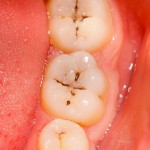
The traditional approach to treatment of caries has been to remove the damaged tissue and restore the resulting cavity. Increasingly this is being challenged and a range of alternative approaches has been advanced. The aim of this review was to compare noninvasive, micro invasive, and minimally invasive treatments for pit-and-fissure lesions in permanent teeth.
Methods
Searches were conducted in the Cochrane Central Register of Controlled Trials, PubMed, Embase, clinicaltrials.gov and opengrey.eu databases. Randomized, quasi-randomized, or non-randomised controlled trials comparing two strategies for the management of pit and fissure caries published since 1967 with a minimum follow-up of 6 months were considered. Two reviewers independently screened studies, abstracted data and assessed quality.
The unit of analysis for meta-analysis was the patient. Pairwise meta-analysis was performed using a random effects model. Network meta-analysis was performed using Bayesian random effects hierarchical models and a Markov chain Monte Carlo simulation. Subgroup analyses were performed to evaluate effects of participants’ age, lesion depths (enamel vs. dentinal lesions), surface integrity and sealant materials (resin based vs. glass ionomer cement sealant) on effect estimates.
Results
- 14 studies (10 RCTs) involving a total of 1440 patients and 3551 lesions were included.
- 3 studies included adults but the majority focused on children and adolescents.
- The majority of studies evaluated non-cavitated lesions with just 5 studies evaluating cavitated lesions.
- Pairwise meta-analysis found microinvasive and minimally invasive treated lesions to require less invasive retreatments than control lesions whereas the estimate for noninvasively treated lesions remained nonsignificant (see table below).
| Number of studies | Odds Ratio | 95% confidence interval | |
| Non invasive v control | 3 | 0.64 | 0.39 – 1.06 |
| Micro invasive v control | 8 | 0.13 | 0.07 – 0.26 |
| Micro v non-invasive | 2 | 0.99 | 0.50 – 1.96 |
| Minimally invasive v control | 1 | 0.13 | 0.03 – 0.50 |
| Minimally v micro invasive | 2 | 0.32 | 0.06 – 1.73 |
- These findings were reflected in the strategy ranking stemming from network meta-analysis (first, minimally invasive; second, micro invasive; third, noninvasive). However, micro invasive treatment required significantly total retreatments (including resealing) than minimally or noninvasive treatments.
- Due to limited study quality, the evidence was graded as low or very low.
Conclusions
The authors concluded: –
The evaluated data found micro-invasive and minimally invasive treatments efficacious to avoid invasive retreatments after treating pit-and-fissure lesions in permanent teeth. Current evidence indicates that noninvasive treatments might also be suitable for this purpose, while effect estimates remain nonsignificant. The need for any retreatment was significantly higher in microinvasively (i.e., sealed) lesions than in those that received noninvasive or minimally invasive treatments.
Comments
The authors highlight a number of limitations with this review. There are only a small number of studies and they are quite heterogeneous. The follow up periods for many of the studies is short and the risk of bias in the included studies was high. Consequently the available evidence for these approaches is limited and the level of certainty about the findings is low to very low. Previous reviews (Dental Elf 18th Nov 2014) have suggested that less invasive approaches to caries removal are effective.
Links
Schwendicke F, Jäger AM, Paris S, Hsu LY, Tu YK. Treating Pit-and-Fissure Caries: A Systematic Review and Network Meta-analysis. J Dent Res. 2015 Feb 20. pii: 0022034515571184. [Epub ahead of print] Review. PubMed PMID: 25710951.
Dental Elf – 18th Nov 2014 – Caries: review suggests complete removal not best approach

Don’t miss – Caries: treatments for pit-and-fissure lesions http://t.co/S4nXAka85e #EBP